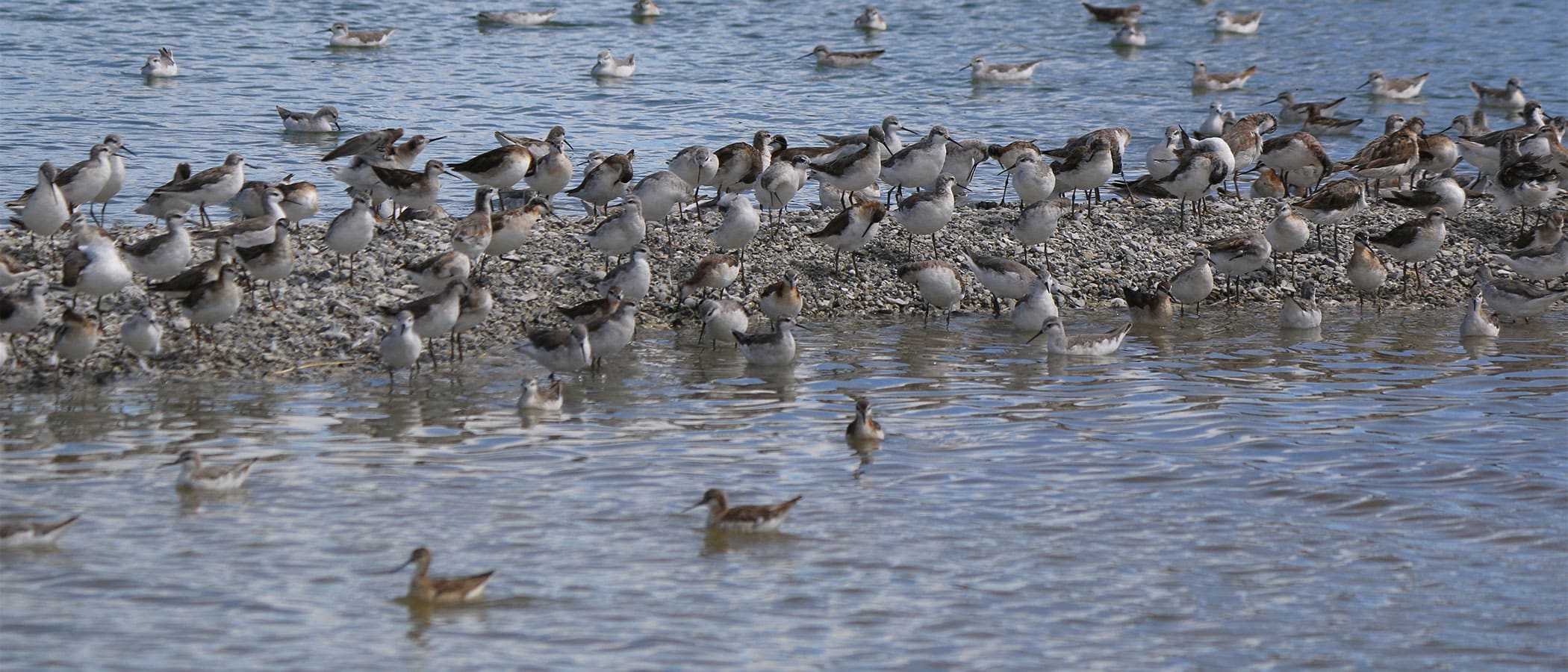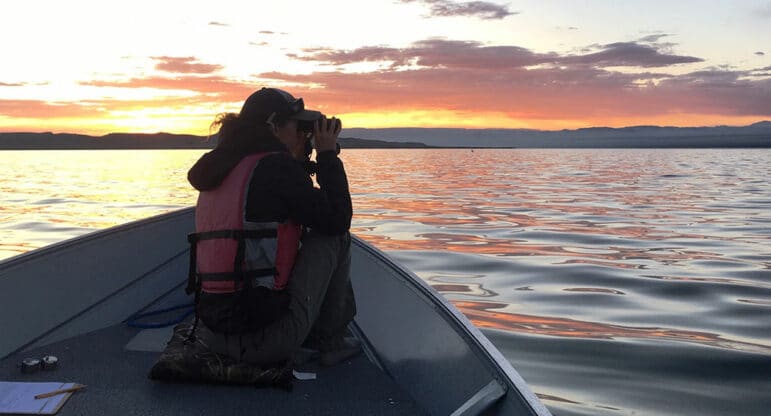
One of my most influential early birding memories involved phalaropes. It was a family trip to Monterey Bay, California around Labor Day, and my sister and I had been interested in birds for a few years, but we weren’t what one might call “serious birders.” On the sandy beach of Asilomar, there’s a small stream leading to the ocean that’s a favorite spot for all sorts of shorebirds, notably killdeer and willets. On that day, diminutive waders called Red-necked Phalaropes were swimming daintily in circles, in search of food. I couldn’t take my eyes away. I was mesmerized, and I was hooked on birds for life.
Almost 12 years later, phalaropes still excite and heal me in ways that I could hardly describe in words. On my most recent South Tufa tour there were hundreds of Wilson’s Phalaropes in and around the little coves of Pirate Ship Tufa, making for a very exciting birding stop, and an opportune moment to present my well-rehearsed facts on the species: they exhibit reverse sexual dimorphism, they migrate 5,000 miles to the Altiplano region and salt lakes of South America, the remaining 3,000-mile non-stop flight from Mono Lake to their wintering grounds takes place in just three to five days, and the list could go on. “When do they get here? How long do they stay?” curious attendees ask as they marvel at the spectacular sight in front of them. “Luckily,” I inform them, “there’s a group of dedicated scientists studying just these questions, and many more.”
I have been fortunate to take part in this year’s continuation of an ongoing phalarope surveying project at Mono Lake led by Ryan Carle with Oikonos Ecosystem Knowledge. Survey data from Mono Lake works in conjunction with surveys at other sites that are important for phalarope migration, including Great Salt Lake in Utah, Lake Abert in Oregon, Owens Lake and the San Francisco Bay in California, and Chaplin Lake in Saskatchewan. This data is urgently needed as saline lakes face conservation threats worldwide, and our understanding of phalarope migration and staging sites is limited.

Surveys at Mono Lake in their current form began in 2019 and have returned for the fourth consecutive year, commencing this season on June 30 and July 1. Surveys include boat counts and several shore counts at established sites across the lakeshore. In the first two days of surveys, around 3,000 and 6,000 Wilson’s Phalaropes were estimated, respectively, mostly from the boat. My duty as a shore-counter involved navigating to our specific count sites (important for data replicability), taking base-level data on wind, visibility, time, and temperature, and scanning amongst the tufa groves through a spotting scope with my counting partner. On day one, the first two stops yielded no phalaropes at all, but after a disappointing initial scan at Navy Beach we encountered a medium-sized flock hiding behind Pirate Ship Tufa. At this point we individually count the flocks we see, and hope to all that’s good in the world that it’s within 15% of your count partner. Having two people makes the data more reliable, replicable, and also allows us to better understand observer error. It also makes the counts more fun. In addition to sharing in our phalarope counting joys, we also get to observe the other wildlife present. At Navy Beach that day, we also got to see a sizeable flock of willets, and two species of tern (Forster’s and Caspian). Plus, it was a truly beautiful morning.
As much as we try to exactly count and estimate phalarope flocks, surveys do not aim to gather exact information on the number of phalaropes, but rather provide a comparable standard that can be used to assess population changes, peak migration, and fluctuations in the usage of various staging sites across years. For example, 2021 saw a count increase of almost 30,000 birds at the Mono Lake surveys, potentially a result of the concurrent drying of Lake Abert in Oregon. Each year, more and more data will provide a better picture of phalarope migration and vital knowledge that will aid in conservation efforts. We’re so excited to welcome back this important study to our shores and to help ensure that the magical experience of phalarope migration amongst the tufa continues for generations to come. And I, personally, am excited to count some more birds.
Top photo by Bartshe Miller.

Hello,
I’m an avid birder from the Mendocino coast and I love visiting Mono Lake. Should you ever need help with the phalarope or the shorebird surveys please don’t hesitate to get in touch. Have binoculars, scope and a kayak and will travel.
All my best,
Tess McGuire